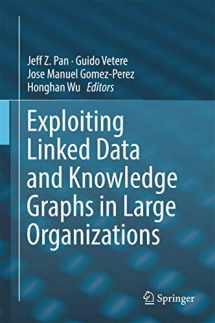
Exploiting Linked Data and Knowledge Graphs in Large Organisations
Book details
Summary
Description
This book addresses the topic of exploiting enterprise-linked data with a particular focus on knowledge construction and accessibility within enterprises. It identifies the gaps between the requirements of enterprise knowledge consumption and “standard” data consuming technologies by analysing real-world use cases, and proposes the enterprise knowledge graph to fill such gaps.
It provides concrete guidelines for effectively deploying linked-data graphs within and across business organizations. It is divided into three parts, focusing on the key technologies for constructing, understanding and employing knowledge graphs. Part 1 introduces basic background information and technologies, and presents a simple architecture to elucidate the main phases and tasks required during the lifecycle of knowledge graphs. Part 2 focuses on technical aspects; it starts with state-of-the art knowledge-graph construction approaches, and then discusses exploration and exploitation techniques as well as advanced question-answering topics concerning knowledge graphs. Lastly, Part 3 demonstrates examples of successful knowledge graph applications in the media industry, healthcare and cultural heritage, and offers conclusions and future visions.


We would LOVE it if you could help us and other readers by reviewing the book
Book review



